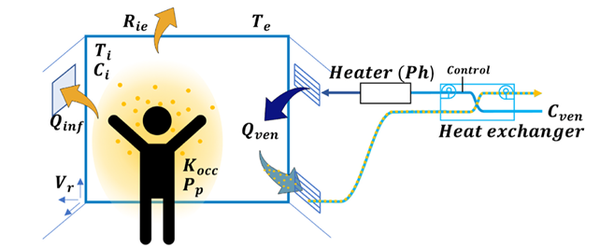The IAQ4EDU project has developed an innovative algorithm to optimize energy demand in educational environments
Oct 02, 2024
The model has been published in the journal Building and Environment
The IAQ4EDU project has developed an innovative algorithm to optimize energy demand in educational environments, based on CO2 concentration and indoor temperature. The study results have been published in the prestigious journal Building and Environment (JCR-Q1, Impact Factor: 7.4), under the title "Educational environments’ energy demand optimization based on indoor CO2 concentration and temperature: Together better than separately." The research was led by Dr. Lluc Canals in collaboration with Dr. Marcel Macarulla, both researchers from the IAQ4EDU project.
Although most educational buildings in Spain use natural ventilation systems, this study shows how the combination of ventilation systems and mechanical heating can improve energy efficiency and thermal comfort in classrooms. The algorithm optimizes the control of ventilation and heating to keep CO2 concentrations and temperature within safe levels. By using grey-box predictive models and processing real-time data at one-minute intervals, it also achieves a notable reduction in energy consumption, particularly in extreme climates, with savings of up to 60%. Therefore, this methodology not only improves indoor air quality but also provides an efficient solution for schools and spaces with high occupancy.

Schematic representation of the space, the HVAC system, and the parameters used in modeling and optimization.
Details can be found in the online version of the article:
https://doi.org/10.1016/j.buildenv.2024.112121
For more information visit our social media pages:
 LinkedIn of the project
LinkedIn of the project  GRIC's Twitter
GRIC's Twitter  ResearchGate
ResearchGate


Share: